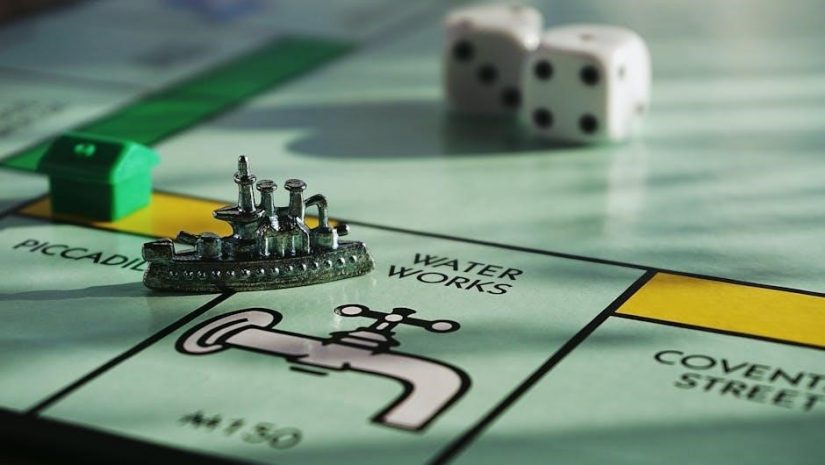Bingo is a popular game of chance enjoyed globally, offering excitement and social interaction. Its simple rules make it accessible to all ages, fostering fun and learning.
1.1 What is Bingo?
Bingo is a classic game of chance that involves matching numbers on a card with those randomly called out. Players use a pre-printed card featuring a grid of numbers, and the goal is to complete specific patterns or lines first. The game is simple yet engaging, making it popular worldwide. It is often played in halls, online platforms, or community events, fostering social interaction and fun. Bingo is enjoyed by people of all ages, as it combines luck with strategic elements. The game’s structure varies, but the core objective remains the same: to be the first to achieve the desired pattern. Its versatility and ease of play have made it a beloved activity for generations, offering both entertainment and opportunities to win prizes.
1.2 Brief History of Bingo
Bingo traces its origins to 16th-century Italy, where a similar lottery game, Lo Gioco del Lotto D’Italia, was played. The concept spread across Europe and evolved over centuries. In the early 20th century, a version called “Beano” emerged in the U.S., played at carnivals. Edwin Lowe, a toy salesman, discovered the game in 1929 and renamed it “Bingo” after hearing a player’s excited shout. Lowe popularized the game by creating standardized rules and cards, making it a staple at community events and fundraisers. By the mid-20th century, Bingo had become a global phenomenon, with variations emerging in different countries. Its simplicity and social nature have made it a beloved activity for generations, adapting to modern formats like online Bingo while retaining its core charm.
1.3 Importance of Understanding Bingo Rules
Understanding Bingo rules is essential for a smooth and enjoyable gaming experience. Clear knowledge of the rules ensures players can follow the game without confusion, allowing everyone to participate fairly. Whether it’s traditional Bingo or modern variations, knowing the objectives, card structures, and winning patterns is crucial. This understanding also helps players make informed decisions, such as selecting the right cards or managing their budget effectively. Additionally, familiarity with rules fosters a sense of community, as all participants can engage equally. For newcomers, learning the rules builds confidence and enhances the fun factor. In competitive or high-stakes games, a solid grasp of the rules can even improve chances of winning. Ultimately, understanding Bingo rules is the foundation for maximizing enjoyment and success in the game.

Basic Rules of Bingo
Bingo’s basic rules are straightforward, ensuring accessibility for all players. The objective is to mark numbers on a card to achieve specific patterns. Understanding these rules enhances gameplay and ensures fair participation, making it enjoyable for everyone involved.

2.1 Objective of the Game
The primary objective of Bingo is to mark numbers on a card to complete specific patterns before other players. The game begins with players receiving a Bingo card featuring a grid of numbers. As numbers are called, players mark them on their cards. The goal is to be the first to achieve a winning pattern, such as a line, shape, or full house. The excitement lies in the race to complete the pattern, making it a thrilling experience for participants. Understanding the objective is essential for enjoying the game and competing effectively. Whether played in a hall or online, the core aim remains the same: to mark numbers accurately and quickly to secure a win.
2.2 Number of Players
Bingo can be played with a wide range of participants, from small groups to large audiences. There is no strict limit on the number of players, making it a versatile game for various settings. Whether it’s a local community hall, a casino, or an online platform, Bingo accommodates players of all ages and backgrounds. The game’s flexibility allows it to be enjoyed by individuals, families, or even thousands in organized events. Each player typically uses one or more Bingo cards, and the number of participants can influence the pace and excitement of the game. The more players, the greater the competition, but the core objective remains the same for everyone. This adaptability is a key factor in Bingo’s enduring popularity as a social and entertaining activity.
2.3 Bingo Card Structure
A standard Bingo card is a 5×5 grid, totaling 25 squares. The columns are labeled B, I, N, G, and O, with each column containing numbers from specific ranges: B (1-15), I (16-30), N (31-45), G (46-60), and O (61-75). The center square is typically marked “FREE” and is automatically considered filled. This structure ensures each card is unique, with numbers randomly distributed to maintain fairness. The grid’s design allows for various winning patterns, such as lines, shapes, or full-house covers. The card’s simplicity and organized layout make it easy for players to track called numbers, enhancing the game’s excitement and strategic appeal. Understanding the Bingo card structure is essential for mastering the game and enjoying its fast-paced nature.
2.4 Calling Numbers
Calling numbers is a critical part of Bingo, ensuring fairness and randomness. Numbers are drawn from a bingo cage, which contains all possible numbers in the game. The caller announces each number clearly, often repeating it for clarity. Players must mark the corresponding number on their cards immediately. In modern games, numbers may also be displayed on screens to aid players. The caller continues until a winner is declared. The process is designed to be transparent, with numbers verified to prevent errors. This systematic approach ensures the game’s integrity and keeps players engaged. Understanding how numbers are called is vital for following the game’s flow and maximizing your chances of winning. The caller’s role is essential in maintaining the game’s pace and excitement, making it a cornerstone of Bingo’s tradition and appeal.
2;5 Winning Patterns
In Bingo, winning patterns determine how players achieve victory. Common patterns include completing a single line (horizontal, vertical, or diagonal), a full house (covering the entire card), or a coverall (all numbers called). Some games feature unique patterns like shapes (e.g., letters or symbols) or specific zones on the card. The caller announces the winning pattern at the start, and players must mark their cards accordingly. Progressive jackpots often require specific patterns, increasing the challenge and potential rewards. Understanding these patterns is crucial for tracking progress and celebrating wins. Variations in patterns keep the game dynamic and engaging, offering something for every player’s skill level and preference. Mastery of winning patterns enhances the fun and competitive spirit of Bingo, making it a beloved activity for millions worldwide.
Popular Variations of Bingo
Bingo offers diverse variations, including 75-Ball, 90-Ball, Speed Bingo, and Theme-Based Bingo, each with unique rules and excitement, catering to different preferences and enhancing the game’s appeal.
3.1 75-Ball Bingo
75-Ball Bingo is a popular variation in the United States, played on a 5×5 grid card with columns labeled B-I-N-G-O. The center square is free, reducing the number of balls needed to win. Numbers are drawn from 1 to 75, with specific ranges for each column. The first column (B) contains numbers 1-15, the second (I) 16-30, and so on. Players aim to complete lines, patterns, or a full house. Winning patterns vary, from single lines to coveralls, where the entire card must be covered. This version is known for its fast-paced gameplay and multiple winning opportunities, making it a favorite in bingo halls and online platforms. Its structured format ensures clarity and excitement for players of all skill levels.

3.2 90-Ball Bingo
90-Ball Bingo is a widely popular variation, especially in the UK and Australia. Played on a 9×3 grid card, each row contains five numbers and four free spaces. The game is divided into three stages: one line, two lines, and a full house. Numbers range from 1 to 90, with each column representing a specific number range. The first column (1-10), second (11-20), and so on, up to the ninth column (81-90). Players mark numbers as they are called, aiming to complete lines horizontally. The game’s structure allows for multiple winners and extended gameplay. Its simplicity and strategic elements make it a favorite among both casual and experienced players. The social interaction and suspense of waiting for numbers add to its enduring appeal in bingo halls and online platforms.
3.3 Speed Bingo
Speed Bingo is a fast-paced variation designed for quick gameplay, ideal for players seeking rapid excitement. Typically played with 75-ball or 90-ball rules, games last only a few minutes. The structure remains similar to traditional bingo, but the number calling is accelerated, requiring players to act swiftly. This format is popular in online platforms, where automated systems ensure quick number generation. Players must stay alert to mark numbers promptly and shout “Bingo!” before others. The shorter duration makes it appealing for those with limited time or preferring a quicker pace. While the prizes may be smaller, the frequent games offer more chances to win. Speed Bingo tests players’ reflexes and focus, making it a thrilling option for both new and experienced players looking for a dynamic twist on the classic game.
3.4 Theme-Based Bingo
Theme-Based Bingo is a creative variation where the game revolves around a specific theme, such as holidays, movies, or music. This format enhances engagement by tailoring the experience to particular interests. The bingo cards, caller announcements, and even prizes align with the chosen theme, creating a unique atmosphere. For example, a movie-themed game might feature cards with film titles or characters, while prizes could include DVDs or cinema tickets. This variation is particularly popular in community or charity events, as it allows organizers to cater to specific audiences. The themed elements add an extra layer of fun and creativity, making the game more dynamic and memorable for participants. It’s an excellent way to blend entertainment with cultural or seasonal relevance, ensuring a fresh and exciting experience for players of all ages.
Equipment and Supplies Needed
Bingo requires specific equipment, including bingo cards, daubers for marking numbers, a number caller or cage for drawing numbers, and a bingo cage to ensure randomness. These tools are essential for a smooth and enjoyable game.
4.1 Bingo Cards
Bingo cards are essential equipment, typically featuring a 5×5 grid with columns labeled B, I, N, G, O. Each column contains numbers within specific ranges: B (1-15), I (16-30), N (31-45), G (46-60), and O (61-75). The center square is usually marked “FREE.” Players use these cards to track called numbers, ensuring quick identification of winning patterns. The unique structure of Bingo cards allows for various winning combinations, making the game both strategic and engaging. Different formats, such as paper cards or digital versions, cater to diverse preferences. Understanding the card layout is crucial for effective gameplay, as it helps players quickly identify potential wins and stay focused during number calls.
4.2 Daubers
Daubers are essential tools in Bingo, used to mark numbers on Bingo cards. Typically colorful and ink-based, they allow players to quickly and clearly mark called numbers. Daubers come in various sizes and tip types, catering to different preferences. They are designed for smooth, precise marking, ensuring numbers are easily visible. Some daubers are reusable, while others are disposable, offering convenience. Their vibrant colors enhance visibility, making it easier to track progress. Daubers play a crucial role in maintaining the game’s pace, enabling players to focus on winning patterns. They are a simple yet vital component, contributing to the overall efficiency and enjoyment of Bingo. Proper use of daubers ensures clarity and accuracy, making them indispensable for players of all levels.
4.3 Number Callers
Number callers are central to the Bingo game, responsible for announcing numbers randomly drawn. Their role ensures fairness and transparency, maintaining the game’s integrity. Callers use a bingo cage or electronic systems to generate numbers, which are then clearly announced. They must speak distinctly and at a steady pace, allowing players to mark their cards accurately. Number callers also monitor the game’s progress, verifying winning patterns and declaring winners. Their efficiency and accuracy are crucial for a smooth and enjoyable experience. In addition to calling numbers, they often engage with players, enhancing the game’s atmosphere. Proper training and attention to detail are essential for number callers to perform effectively. Their role is vital in ensuring the game flows seamlessly and remains fair for all participants.
4.4 Bingo Cage
A bingo cage is a crucial piece of equipment used to randomly draw numbers during the game. It typically consists of a rotating drum containing numbered balls, ensuring fairness and unpredictability. The cage is designed to mix the balls thoroughly before each draw, guaranteeing that each number has an equal chance of being selected. Modern bingo cages often feature transparent materials, allowing players to see the balls being mixed and drawn. Some cages are electronic, using digital displays to show the numbers. The bingo cage is essential for maintaining the integrity of the game, as it eliminates any possibility of bias in number selection. Regular maintenance of the cage is important to ensure smooth operation and prevent any mechanical issues during gameplay. Its role is fundamental in creating an exciting and fair experience for all participants.

Strategies to Improve Your Chances
Enhance your bingo experience by understanding rules, using daubers effectively, and staying focused. These strategies boost enjoyment and winning potential, making every game more engaging and rewarding.
5.1 Understanding Probability

Understanding probability is key to making informed decisions in bingo. Probability helps predict the likelihood of specific numbers being called, allowing players to manage expectations and strategies effectively. By analyzing historical data and patterns, players can identify trends, though each number has an equal chance of being drawn. This knowledge enhances strategic card selection and gameplay, improving overall chances of winning. While probability doesn’t guarantee a win, it provides a framework for smarter play. Balancing luck with probability insights can elevate your bingo experience and decision-making. This approach ensures a more enjoyable and strategic game, keeping you focused and prepared for any outcome.

5.2 Selecting the Right Card
Selecting the right bingo card is crucial for maximizing your chances of winning. With various card designs available, understanding the structure and patterns is essential. For 75-ball bingo, cards feature a 5×5 grid with a free space, while 90-ball cards have a 9×3 layout. Choose cards with balanced numbers and avoid duplicates to minimize overlap with other players. Consider the number of cards you can manage without losing focus, as handling too many can increase costs and reduce concentration. Analyze the game’s pattern requirements and opt for cards that align with common winning combinations. Budget-friendly options like stripped cards or pre-printed patterns can also be effective. By strategically selecting your cards, you enhance your gameplay experience and potential for success.
5.3 Managing Your Budget
Managing your budget is a critical aspect of enjoying bingo responsibly. Set a spending limit before the game to avoid financial strain. Consider the cost of bingo cards, additional games, and any potential expenses. Prioritize games with affordable ticket prices and higher return rates; Avoid chasing losses by sticking to your budget, even if luck isn’t on your side. Track your spending to ensure you’re not overspending. Allocate funds wisely, balancing participation in multiple rounds with maintaining financial stability. By managing your budget effectively, you can enjoy the game without compromising your financial well-being. Remember, bingo is a game of chance, and responsible spending enhances the overall experience.
5.4 Staying Focused
Staying focused is essential to maximize your chances of winning at bingo. Maintain concentration throughout the game to track called numbers accurately. Minimize distractions by avoiding conversations or using electronic devices during play. Keep your bingo card in clear view and mark numbers promptly to avoid missing opportunities. Organize your cards strategically, especially in games with multiple patterns. Stay calm and composed, even during high-stakes moments, to ensure quick decision-making. Avoid overexcitement, as it can lead to errors. By staying alert and attentive, you can react swiftly to winning patterns and enjoy a more rewarding experience. Focus enhances your ability to adapt to the game’s pace and increases your overall enjoyment of bingo.

How to Win at Bingo
Winning at bingo requires completing specific patterns, such as lines or full houses, before others. Understanding rules, using strategies, and staying alert are key to success in the game.

6.1 Completing a Line
Completing a line is one of the most common ways to win at bingo. This involves marking all numbers in a horizontal, vertical, or diagonal row on your card. The game typically starts with a single line, and players must listen carefully as numbers are called to mark them quickly. Once all five numbers in a line are marked, the player shouts “Bingo!” to claim their win. In some variations, completing multiple lines or patterns can lead to bigger prizes. It’s essential to stay focused and mark numbers accurately to avoid missing a potential win. This straightforward objective makes bingo accessible and enjoyable for players of all ages and skill levels.
6.2 Full House
A Full House is a top-tier achievement in bingo, where every single number on the player’s card is marked. This is the ultimate goal in many bingo variations, particularly in 90-ball games, where it follows the completion of one and two lines. To achieve a Full House, players must carefully track each called number and mark their cards accurately. The excitement builds as the final numbers are called, and the first player to mark all numbers shouts “Bingo!” to claim victory. This win often comes with the highest prize in the game, making it a thrilling moment for participants. The game typically concludes once a Full House is achieved, emphasizing the importance of staying focused and prepared to mark numbers quickly and correctly.
6.3 Coverall and Progressive Jackpots
Coverall and Progressive Jackpots are advanced winning patterns in bingo that add excitement and higher stakes to the game. A Coverall, also known as a “Blackout,” requires players to mark every number on their bingo card. This is typically the most challenging and rewarding win, often associated with the largest prizes. Progressive Jackpots, on the other hand, are special prizes that increase over time until someone wins. These jackpots are usually linked to specific games or patterns and grow with each session without a winner. Achieving a Coverall within a set number of calls can trigger a Progressive Jackpot, creating suspense and urgency. These high-stakes options attract experienced players seeking bigger rewards, making them a thrilling addition to traditional bingo games.
Bingo is a timeless game offering fun, social interaction, and learning opportunities. For further reading, explore “Bingo Rules PDF” guides and resources to enhance your gameplay and strategy.
7.1 Summary of Key Points
Bingo is a game of chance with clear rules and variations. The objective is to mark numbers on a card to achieve specific patterns. Cards vary in structure, with 75-ball and 90-ball versions being most common. Numbers are called randomly, and players must daub them quickly. Winning patterns range from lines to full houses. Popular variations include speed and theme-based games. Essential equipment includes cards, daubers, and a number caller. Strategies like understanding probability and managing budgets can enhance gameplay. Staying focused and organized is crucial for success. Resources like “Bingo Rules PDF” provide detailed guides for learning and mastering the game. Whether played socially or competitively, Bingo offers entertainment and opportunities to win. Familiarizing yourself with these key points ensures a enjoyable and strategic experience.

